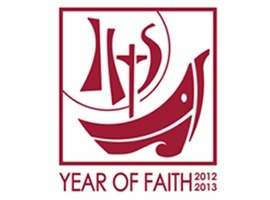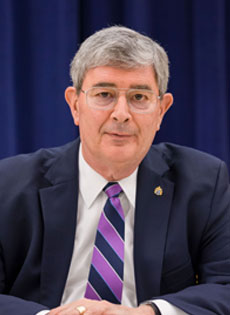
Vatican II's golden anniversary
Monday, November 5, 2012
*George Weigel
The Second Ecumenical Council of the Vatican, the most important Catholic event since the 16th-century Council of Trent, was solemnly opened by Pope John XXIII 50 years ago, on Oct. 11, 1962. Commentators ever since have taken that date as the beginning of the Catholic Church’s engagement with modern society and culture. In fact, however, the Church’s grappling with modernity began 84 years earlier, with the election of Pope Leo XIII on March 3, 1878. That date marks the beginning of the transition from the Catholicism of the Counter-Reformation to the Catholicism of the New Evangelization. And in that process of transition, Vatican II played a crucial, accelerating role.
Vatican II is sometimes imagined to be an example of ecclesiastical parthenogenesis: the Council just happened, absent significant antecedents, in a decisive rupture with the past. That, too, is a misconception. Leo XIII paved the way to Vatican II by initiating his reform of the Church’s philosophical and theological life, by sponsoring Catholic biblical and historical studies, and by defining the basic principles of Catholic social doctrine. The Leonine reform was intensified by the Catholic intellectual and liturgical renaissance of the mid-20th century, which shaped the early, reforming-years-pontificate of Pius XII: the most-cited source (after the Bible) in the documents of Vatican II. No Leo XIII, no Liturgical Movement, no Catholic Action, no revival of Thomistic philosophy, no rediscovery of the importance of history for theology, no Pius XII—no Vatican II.

It took awhile. Vatican II was like no other ecumenical Council in history, in that it did not provide authoritative keys for its own interpretation: the Council Fathers wrote no creed, condemned no heresy, legislated no new canons, defined no dogmas. Thus the decade and a half after the Council ended on Dec. 8, 1965, was a bit of a free-for-all, as varying interpretations of the Council (including appeals to an amorphous “spirit of Vatican II” that seems to have more in common with low-church Protestantism than with Catholicism) contended with each other in what amounted to an ecclesiastical civil war.
The Providence raised up two men of genius—John Paul II and Benedict XVI, both men of the Council—to give Vatican II an authoritative interpretation. Their teaching, carried throughout the world by an unprecedented series of papal pilgrimages, has given the Church the truth about the Council—although some Catholics seem a bit slow to get the message. Moreover, in summoning the world Church to the Great Jubilee of 2000, John Paul II gave Catholicism the Pentecostal experience that John XXIII for which hoped, thus preparing the world Church to enter the third millennium with great missionary energy: to “put out into the deep,” as John Paul II put it, of the New Evangelization.
And that, finally, is Vatican II’s message to every Catholic. Vatican II did not displace the Church’s tradition. Vatican II did not create do-it-yourself-Catholicism. Vatican II, which accelerated the great historical evolution of Catholicism from a Church of institutional maintenance to a Church of evangelical mission in a genuine and Spirit-led development of self-understanding, taught Catholics that they enter mission territory every day. The degree to which each of us brings the Gospel to others is the degree to which we understand Vatican II at its golden anniversary.


Comments from readers
And therefore, I read in silence. Then I "put out into the deep," Oh, the treasures that are discovered when we Listen to Jesus: LET THE CHILDREN COME TO ME!
It is then I understand what I have read and watch the Spirit in action.